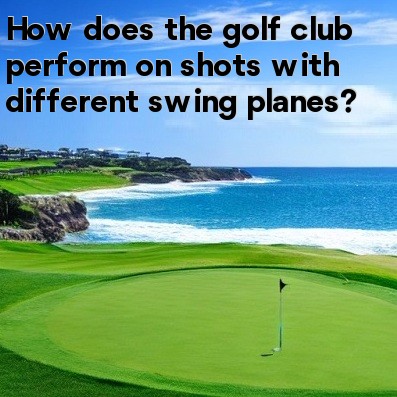
How Does the Golf Club Perform on Shots with Different Swing Planes?
Golf is a game that requires precision and skill in order to excel. One important factor that influences the outcome of a golf shot is the swing plane. The swing plane refers to the path of the golf club as it travels through the ball during the swing.
When it comes to shots with different swing planes, the performance of the golf club can vary significantly. Let's take a closer look at how the club behaves in these situations:
- Shots with a steep swing plane: When the swing plane is steep, meaning the club is coming down at a steep angle, the clubhead tends to travel in a more vertical path. This has a few implications for the performance of the club. Firstly, shots with a steep swing plane tend to have a higher trajectory. The clubhead strikes the ball on a more upward angle, resulting in shots that launch higher into the air. Additionally, shots with a steep swing plane often produce more backspin, causing the ball to stop more quickly upon landing.
- Shots with a shallow swing plane: On the other end of the spectrum, when the swing plane is shallow and the club is coming down on a more shallow angle, the clubhead typically travels on a flatter path. This has its own set of characteristics. Shots with a shallow swing plane tend to have a lower trajectory and less backspin compared to shots with a steeper swing plane. The flatter clubhead path also promotes a more penetrating ball flight, which can be advantageous in certain situations, such as playing in windy conditions.
- Neutral swing plane shots: A neutral swing plane is when the club is coming down on a relatively straight angle, neither too steep nor too shallow. Shots with a neutral swing plane provide a good balance between distance and accuracy. The clubhead strikes the ball on a more ideal angle, resulting in shots that have a medium trajectory and moderate backspin. This is the desired swing plane for most golfers.
It is worth noting that the performance of the golf club on shots with different swing planes also depends on other factors such as the golfer's swing speed, club design, and the type of golf ball being used. Furthermore, every golfer has their own swing characteristics and preferences, so the way they experience the performance of the club may vary.
Understanding how the golf club performs on shots with different swing planes can help golfers make better decisions on the course. By adjusting their swing plane, golfers can optimize their shots to suit the specific situation at hand. For example, when facing a tight fairway with overhanging trees, a golfer might choose to use a shallower swing plane to keep the ball lower and avoid potential obstacles.
In conclusion, the performance of the golf club on shots with different swing planes can vary significantly. A steep swing plane tends to result in higher shots with more backspin, while a shallow swing plane produces lower shots with less backspin. Shots with a neutral swing plane provide a good balance between distance and accuracy. Understanding these characteristics can help golfers make informed decisions and improve their overall game.





